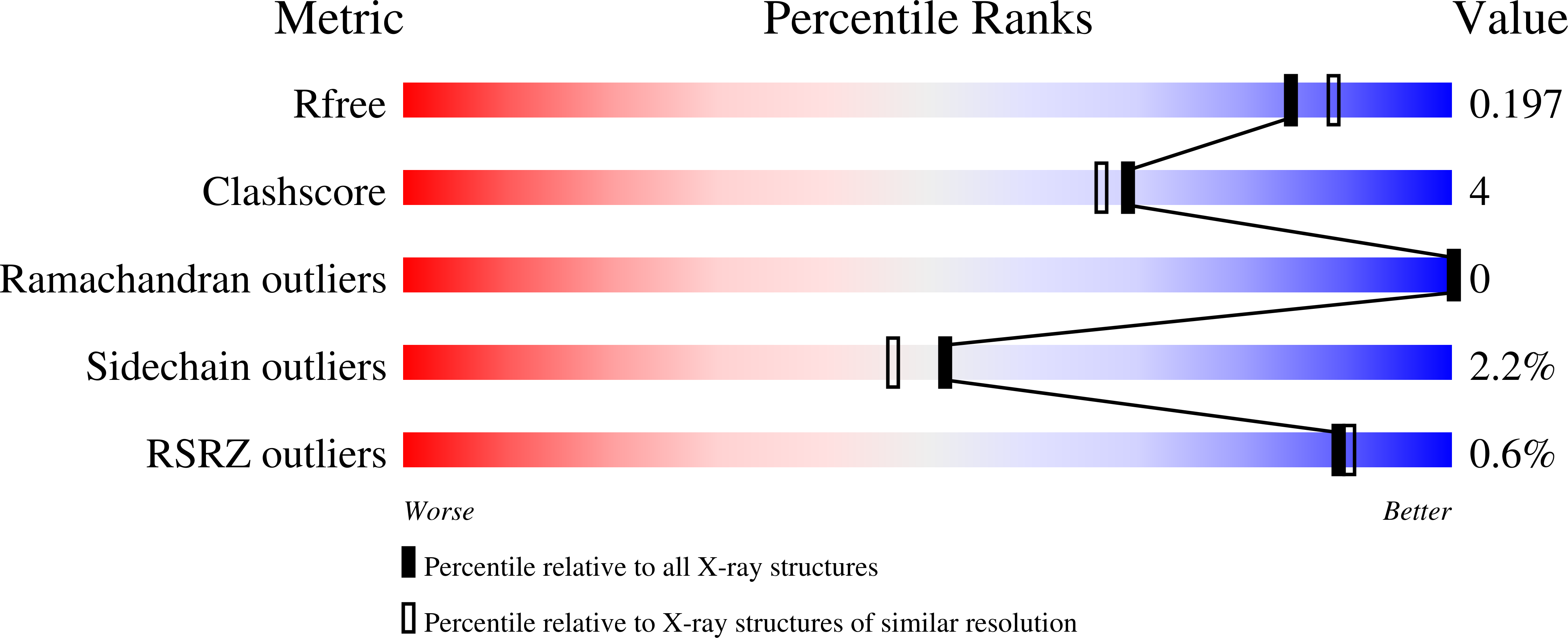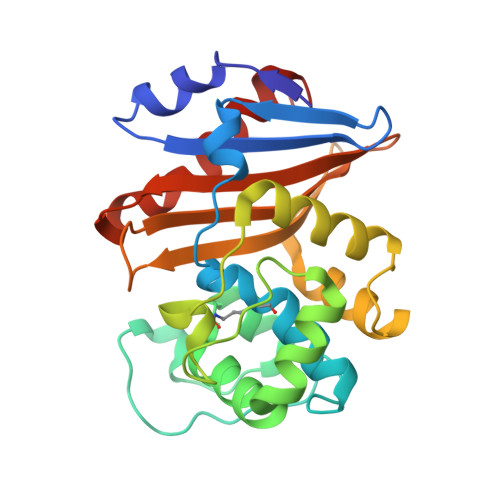Removal of the Side Chain at the Active-Site Serine by a Glycine Substitution Increases the Stability of a Wide Range of Serine beta-Lactamases by Relieving Steric Strain.
Stojanoski, V., Adamski, C.J., Hu, L., Mehta, S.C., Sankaran, B., Zwart, P., Prasad, B.V., Palzkill, T.(2016) Biochemistry 55: 2479-2490
- PubMed: 27073009
- DOI: https://doi.org/10.1021/acs.biochem.6b00056
- Primary Citation of Related Structures:
5HAI, 5HAP, 5HAQ, 5HAR - PubMed Abstract:
Serine β-lactamases are bacterial enzymes that hydrolyze β-lactam antibiotics. They utilize an active-site serine residue as a nucleophile, forming an acyl-enzyme intermediate during hydrolysis. In this study, thermal denaturation experiments as well as X-ray crystallography were performed to test the effect of substitution of the catalytic serine with glycine on protein stability in serine β-lactamases. Six different enzymes comprising representatives from each of the three classes of serine β-lactamases were examined, including TEM-1, CTX-M-14, and KPC-2 of class A, P99 of class C, and OXA-48 and OXA-163 of class D. For each enzyme, the wild type and a serine-to-glycine mutant were evaluated for stability. The glycine mutants all exhibited enhanced thermostability compared to that of the wild type. In contrast, alanine substitutions of the catalytic serine in TEM-1, OXA-48, and OXA-163 did not alter stability, suggesting removal of the Cβ atom is key to the stability increase associated with the glycine mutants. The X-ray crystal structures of P99 S64G, OXA-48 S70G and S70A, and OXA-163 S70G suggest that removal of the side chain of the catalytic serine releases steric strain to improve enzyme stability. Additionally, analysis of the torsion angles at the nucleophile position indicates that the glycine mutants exhibit improved distance and angular parameters of the intrahelical hydrogen bond network compared to those of the wild-type enzymes, which is also consistent with increased stability. The increased stability of the mutants indicates that the enzyme pays a price in stability for the presence of a side chain at the catalytic serine position but that the cost is necessary in that removal of the serine drastically impairs function. These findings support the stability-function hypothesis, which states that active-site residues are optimized for substrate binding and catalysis but that the requirements for catalysis are often not consistent with the requirements for optimal stability.
Organizational Affiliation:
Berkeley Center for Structural Biology, Molecular Biophysics and Integrated Bioimaging, Advanced Light Source, Lawrence Berkeley National Laboratory , Berkeley, California 94720, United States.























